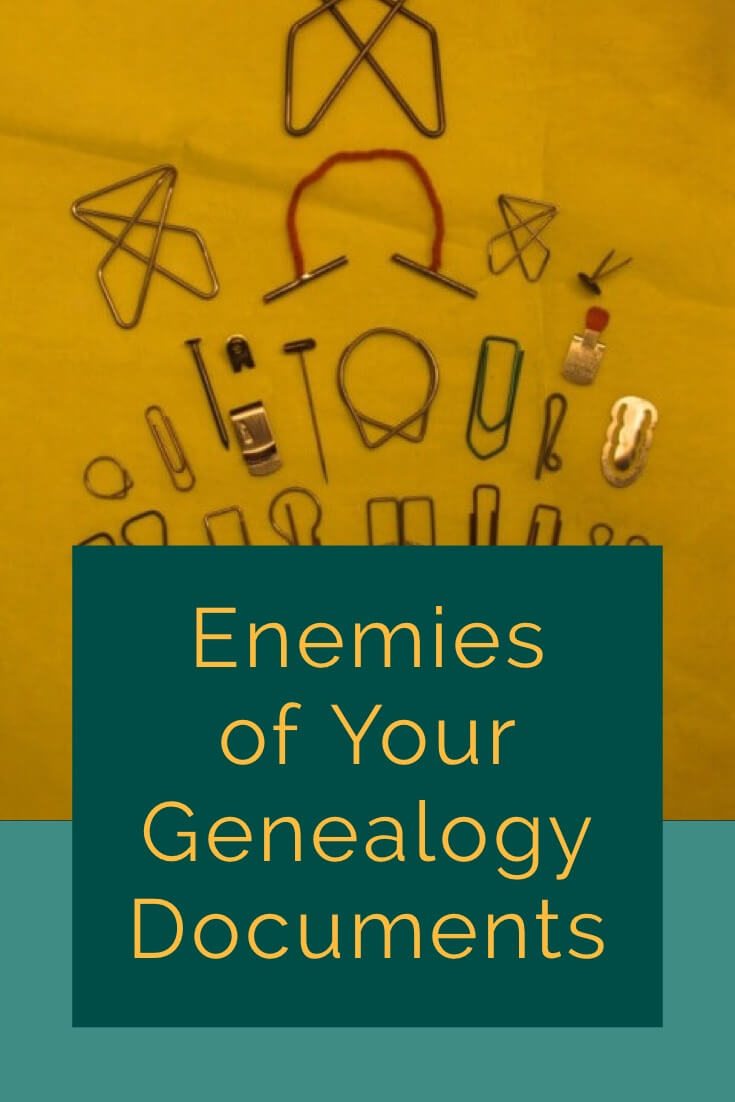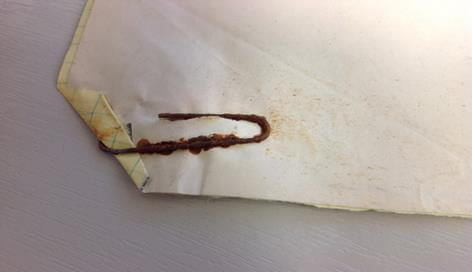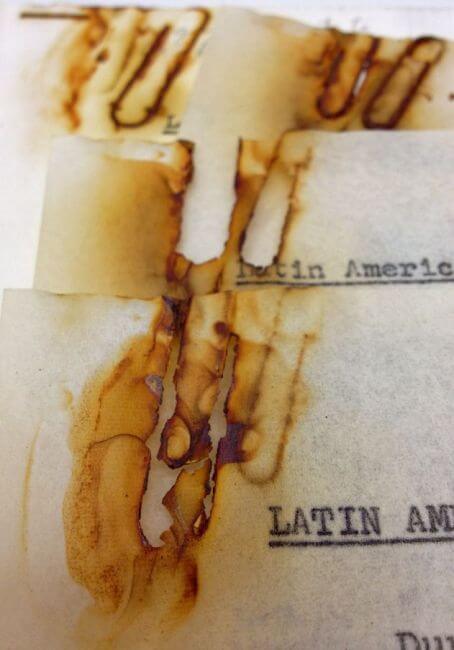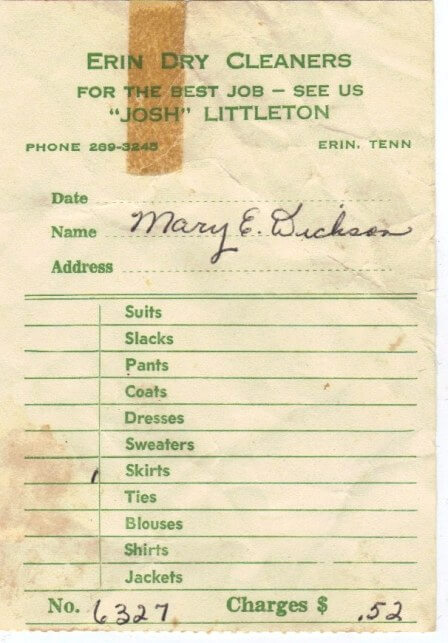Genealogists, like archivists, encounter staples, metal paper clips, rubber bands, tape and other fasteners attached to records. These were used frequently to keep documents together back in the day. Knowing what these items can do to genealogical records and how to remove them is a skill that every genealogist should have. The Archive Lady Melissa Barker shares her advice on what to do with these materials when you encounter them in genealogical documents.
You’ve probably encountered various forms of metal fasteners while combing through genealogical records. It is common to clip several documents together that belong together. Unfortunately, this practice continues today in record offices all across the globe. While it may be practical at the time for ensuring important documents stay together, it can actually be problematic when it comes to document preservation. Let’s take a look at the various types of fasteners and what you can do to ensure the survival of your precious documents.

Metal Fasteners


Genealogists ask me all the time why they should remove all metal fasteners from their genealogical records. Many believe these metal fasteners are part of the historical nature of the documents and should be left alone. Unfortunately, metal fasteners are a danger to genealogical records. The damage they can do to your documents can be extensive.
Over time, some metal fasteners can actually cause genealogical records to tear or become damaged. If the clipped-together documents are read over and over and the pages are flipped multiple times, the metal fasteners could cause ripping, tearing, and other damage to the document.
Sometimes metal fasteners get exposed to moisture and that causes the metal to become rusted and actually adhere to the document. Metal fasteners that stick or attach themselves to genealogical records will cause damage. To prevent this damage, I strongly recommend that you carefully remove all metal fasteners from all documents.
Rubber Bands
Rubber bands will deteriorate over time. The rubber breaks down in the presence of temperature and humidity fluctuations. Rubber bands will either become sticky or brittle over time. They will also leave a brown stain on your documents.
Removing rubber bands can be a difficult task if they have adhered themselves to the records. The most important thing to remember is to be patient when trying to remove rubber bands.
Cellophane Tape
In 1925, Richard Gurley Drew invented cellophane tape while working for Johnson & Johnson. This type of tape was often used on documents to mend tears and sometimes to attach pages together. As practical a solution as it may seem, cellophane tape or transparent tape should not be used on genealogical documents either.
Using cellophane tape is very destructive to documents and photographs. Tape breaks down over time and, like rubber bands, are susceptible to temperature and humidity. Tape will break down and become very sticky or it will become brittle. Either way, tape can cause damage to documents by sticking to the pages and leaving a yellow stain on the records.

After Enemy Removal
Once you’ve removed the enemies of your documents, you’ll want to take additional steps to protect and preserve them. My quick and easy-to-read article of How to Archive Family History Documents will get you started.
If you do not feel comfortable removing metal fasteners, rubber bands or cellophane tape from your records, please consult with a professional conservator for help. You can find a professional conservator at the American Institute for Conservation of Historic and Artistic Works here.
Final Thoughts
It may seem like removing these fasteners from historical documents could be destructive, but in fact, the fasteners themselves cause destruction over time. Your best bet for the survival of these important records is to remove them. Taking steps to preserve the life of your most precious family documents is something we can all agree is a good thing!
Images courtesy Melissa Barker and the Houston County, TN Archives.
Listen to this segment on the Premium Podcast
Preserving documents and artifacts is a crucial part of genealogy for any family historian. The Archive Lady Melissa Barker is a regular contributor to the Genealogy Gems Premium Podcast to help you tackle these preservation challenges and answer your most pressing questions. Listen to this interview with Melissa Barker all about removing fasteners from documents in Premium Podcast Episode #161, available now to all Premium eLearning Members! Not a member? Sign up and start learning today!

Melissa Barker
Melissa Barker is a Certified Archives Records Manager, the Houston County, Tennessee Archivist and author of the popular blog A Genealogist in the Archives and an advice columnist. She has been researching her own family history for the past 27 years.
(Additional content by Lisa Louise Cooke)





